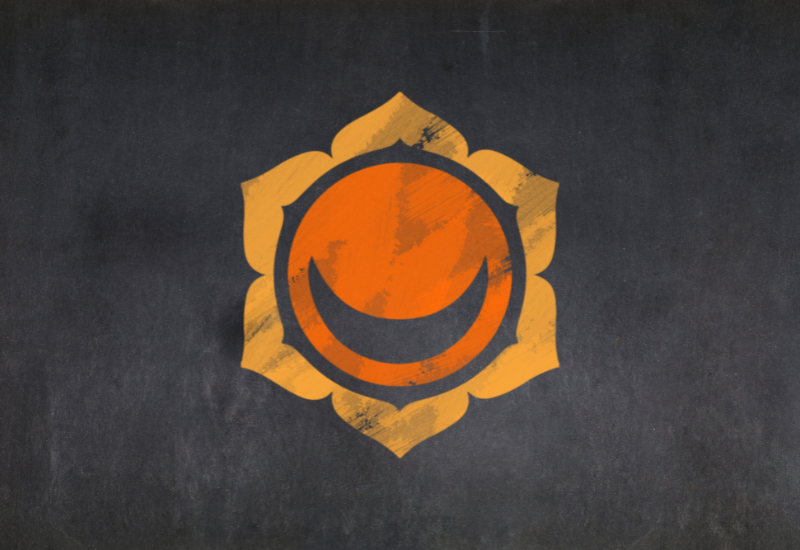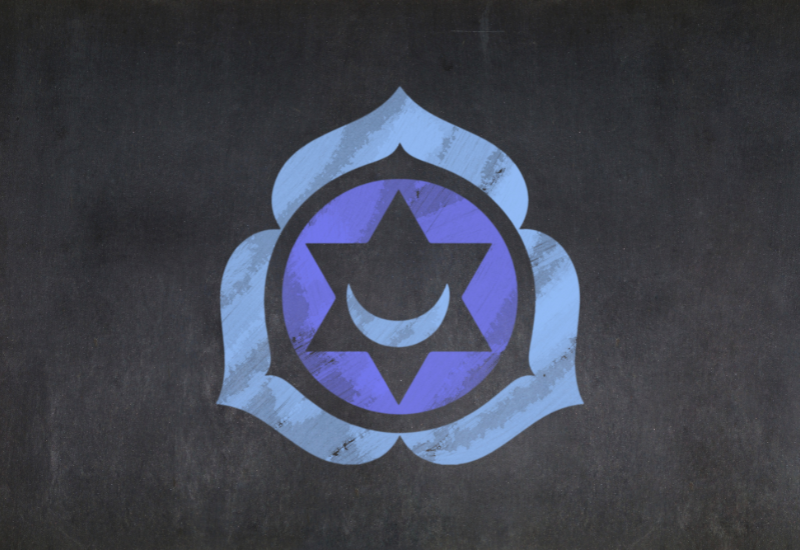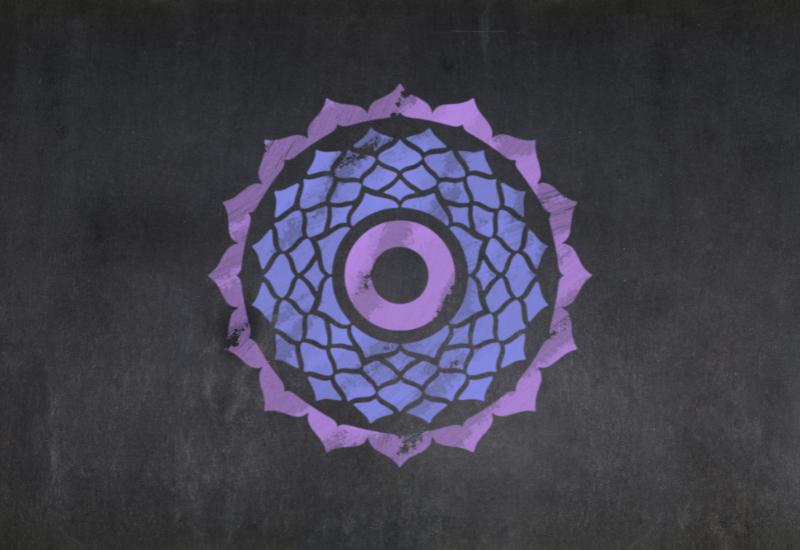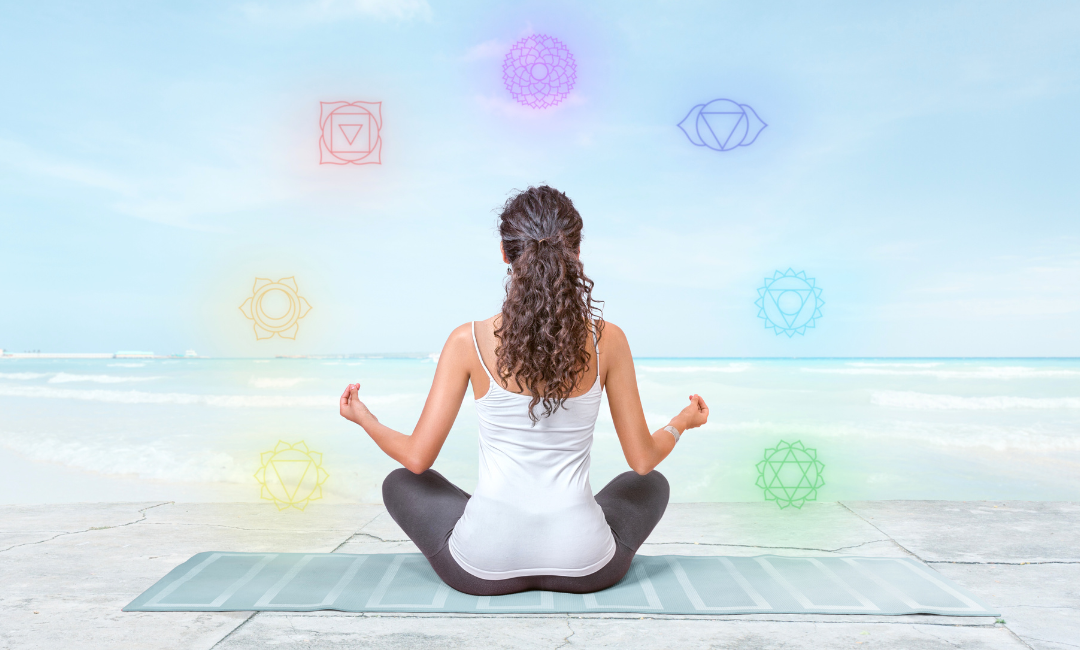What are Chakras?
The term chakra comes from the ancient Indian language of Sanskrit, meaning wheel or disk. In the context of spirituality and holistic health, chakras are believed to be energy centers in the body that govern various physical, emotional, and spiritual aspects of our lives. Rooted in ancient Indian traditions, including Hinduism and Buddhism, the chakra system provides a framework to understand our well-being and vitality.
Chakras are typically envisioned as spinning wheels of energy that align with the spine, starting from the base and moving towards the crown of the head. Each chakra corresponds to specific physical, emotional, psychological, and spiritual states, influencing both our overall health and our experiences in life.
The Seven Main Chakras
The human body is generally thought to have seven primary chakras, each contributing to our well-being:
Root Chakra (Muladhara)
Location: Base of the spine
Color: Red
Element: Earth
Function: Represents stability, security, and our basic needs (food, shelter, safety).
Benefits: A balanced root chakra enhances feelings of stability, safety, and groundedness. It supports physical health and the ability to effectively manage stress.

Sacral Chakra (Svadhisthana)
Location: Lower abdomen, about two inches below the navel
Color: Orange
Element: Water
Function: Governs creativity, sexuality, pleasure, and emotional well-being.
Benefits: A healthy sacral chakra promotes healthy sexual relationships, creativity, and emotional connections. It aids in processing emotions and encourages joy.

Solar Plexus Chakra (Manipura)
Location: Upper abdomen, in the stomach area
Color: Yellow
Element: Fire
Function: Relates to personal power, self-esteem, and confidence.
Benefits: A balanced solar plexus chakra fosters self-confidence, motivation, and decisiveness. It allows individuals to set and pursue personal goals effectively.

Heart Chakra (Anahata)
Location: Center of the chest
Color: Green
Element: Air
Function: Represents love, compassion, and forgiveness.
Benefits: An open heart chakra enables unconditional love for oneself and others. It encourages compassion and emotional healing, contributing to healthier relationships.

Throat Chakra (Vishuddha)
Location: Throat
Color: Blue
Element: Ether (Space)
Function: Associated with communication, self-expression, and truth.
Benefits: A balanced throat chakra enhances clarity in communication. It allows for authentic self-expression, boosts creativity, and promotes the ability to speak one’s truth.

Third Eye Chakra (Ajna)
Location: Forehead, between the eyes
Color: Indigo
Element: Light
Function: Governs intuition, foresight, and imagination.
Benefits: A well-functioning third eye chakra encourages intuition and insight. It promotes mental clarity, cognitive function, and deeper self-awareness.

Crown Chakra (Sahasrara)
Location: Top of the head
Color: Violet or white
Element: Thought
Function: Represents spiritual connection and enlightenment.
Benefits: A balanced crown chakra fosters a sense of oneness with the universe, spiritual awareness, and a deep connection to higher consciousness.

How Chakras Affect Our Well-being
Chakras serve as vital energy centers that can significantly impact our physical, emotional, and spiritual health. Here’s how they influence our overall well-being:
Physical Health
The health of each chakra often correlates with physical ailments or imbalances in specific organs and body systems. For instance, the root chakra affects the legs and feet, while the heart chakra impacts the circulatory system. When a chakra is blocked or out of balance, it can lead to physical health issues, ranging from chronic pain to digestive problems.
Emotional Balance
Chakras also play a crucial role in emotional regulation. For example, an overactive sacral chakra might lead to issues with attachment or emotional instability, while a blocked heart chakra can manifest as emotional detachment or difficulty in forming relationships. Balancing the chakras can facilitate emotional healing and stability.
Mental Clarity
Mental health and clarity of thought are closely tied to the functioning of the third eye and crown chakras. When these chakras are balanced, individuals are more likely to experience clarity, focus, and enhanced intuition. This leads to better decision-making and improved mental resilience.
Spiritual Growth
Chakras are deeply linked to our spiritual journey. A balanced crown chakra, for example, opens pathways to spiritual enlightenment and a sense of interconnectedness with the universe. This promotes a greater understanding of oneself and one’s purpose.
Benefits of Chakra Healing
Chakra healing involves various practices aimed at restoring balance and harmony to these energy centers. Here are some benefits associated with chakra healing:
Improved Physical Health
By identifying and addressing blockages in the chakras, individuals may experience alleviation from physical ailments. Techniques such as yoga, meditation, and energy healing can help restore the energy flow, promoting better health.
Enhanced Emotional Well-being
Chakra healing can facilitate emotional release and help individuals process past traumas. It encourages emotional resilience, leading to improved relationships and a deeper understanding of oneself.
Greater Mental Clarity and Focus
Many find that through chakra healing exercises, especially meditation and mindfulness practices, they experience increased mental clarity. This enhanced focus can lead to greater productivity and creativity in daily tasks.
Strengthened Spiritual Connection
Practices aimed at opening and balancing the chakras can deepen one’s spiritual practice. People often report heightened intuition, improved meditation experiences, and a sense of spiritual fulfillment.
Stress Reduction and Relaxation
Chakra healing practices, particularly meditation and yoga, are known to reduce stress and promote relaxation. By fostering a state of calm, these practices enhance one’s ability to cope with life’s challenges.
Heightened Self-awareness
Balancing the chakras promotes self-exploration and awareness, leading to a better understanding of one’s motivations, fears, and desires. This self-awareness is essential for personal growth and emotional healing.
Chakra Healing Techniques
Several techniques can be employed to balance and heal the chakras. Here are some commonly used methods:
Meditation
Meditation is a powerful tool for chakra healing. Visualization techniques, such as imagining each chakra as a spinning wheel of light, can help individuals focus on bringing energy back to each center.
Yoga
Different yoga poses target specific chakras. For instance, grounding poses help connect with the root chakra, while heart-opening poses can aid in balancing the heart chakra. Regular yoga practice can facilitate energy flow throughout the body.
Breathing Exercises (Pranayama)
Breath control techniques can enhance energy flow through the chakras. Pranayama helps in grounding, energizing, and calming the mind and body, contributing to overall chakra balance.
Sound Healing
Sound frequencies, such as singing bowls or chanting, can resonate with specific chakras. For example, chanting LAM can help in balancing the root chakra, while YAM is associated with the heart chakra.
Crystals and Gemstones
Certain crystals are believed to resonate with specific chakras. For instance, red stones like garnet and jasper can help in grounding the root chakra, while clear quartz can amplify energy for spiritual growth.
Energy Healing
Practices such as Reiki can assist in clearing blocked energy and restoring balance to the chakras. An energy healer works to channel energy into the client’s body, promoting healing and balance.
Yoga Practices for Chakra Balancing
Root Chakra (Muladhara) Balancing
Postures: Mountain Pose (Tadasana), Warrior I (Virabhadrasana I), and Child’s Pose (Balasana).
Breath Technique: Practice deep belly breathing. As you breathe in, visualize energy moving from the earth up through your feet to your root chakra.
Meditation: Sit in a comfortable position, visualize a red light at the base of your spine, and chant the sound Lam to vibrate this chakra.
Sacral Chakra (Svadhisthana) Balancing
Postures: Cobra Pose (Bhujangasana), Cat-Cow Pose (Marjaryasana-Bitilasana), and Goddess Pose (Utkata Konasana).
Breath Technique: Use the Breath of Fire technique (Kapalabhati). Inhale deeply and exhale forcefully through the nose while contracting the abdominal muscles. This helps in igniting creativity and passion.
Meditation: Visualize an orange light in your lower abdomen and connect with your emotions, allowing them to flow freely.
Solar Plexus Chakra (Manipura) Balancing
Postures: Boat Pose (Navasana), Warrior III (Virabhadrasana III), and Plank Pose.
Breath Technique: Practice ‘Ujjayi breathing’ by slightly constricting the back of your throat to create a soft sound while breathing. This can help enhance self-confidence and determination.
Meditation: Imagine a bright yellow sun in your solar plexus region. Feel its warmth and energy radiating throughout your body as you chant Ram.
Heart Chakra (Anahata) Balancing
Postures: Heart-Opening Pose (Urdhva Mukha Svanasana), Camel Pose (Ustrasana), and Fish Pose (Matsyasana).
Breath Technique: Practice loving-kindness meditation (Metta). Inhale love and compassion, and exhale negativity and tension.
Meditation: Visualize a green light expanding in your chest, nurturing feelings of love, acceptance, and forgiveness, while chanting Yam.
Throat Chakra (Vishuddha) Balancing
Postures: Fish Pose (Matsyasana), Shoulder Stand (Sarvangasana), and Lion’s Breath (Simhasana).
Breath Technique: Engage in humming (Bhramari pranayama) or chanting. The vibrational quality of sound helps to clear any blockages in communication.
Meditation: Visualize a bright blue light at your throat, enhancing clarity in communication and self-expression.
Third Eye Chakra (Ajna) Balancing
Postures: Child’s Pose (Balasana), Downward-Facing Dog (Adho Mukha Svanasana), and Forward Bend (Uttanasana).
Breath Technique: Engage in ‘Nadi Shodhana’ (Alternate Nostril Breathing) to balance the mind and enhance intuition.
Meditation: Imagine a deep indigo light illuminating your third eye area, enhancing your intuition and insight, while chanting Om.
Crown Chakra (Sahasrara) Balancing
Postures: Seated Forward Bend (Paschimottanasana), Headstand (Sirsasana), and Corpse Pose (Savasana).
Breath Technique: Practice deep, calming breaths. Focusing on the breath connects you to the universal energy.
Meditation: Visualize a violet or white light at the top of your head, creating a connection to the divine and the universe, while chanting Ng.
Creating a Routine
Begin with a clear intention for your practice. Set aside time each day or week to focus on balancing your chakras. You may choose to concentrate on one chakra per session or combine movements for a more holistic approach. Remember, consistency is key.
Warm-Up: Always start with gentle stretches to warm up your body and prepare for the practice.
Asanas: Focus on the specific poses associated with each chakra. Allow each pose to be held for several breaths, tuning into your body’s sensations.
Breath Work: Incorporate breath techniques throughout your practice to enhance the flow of energy.
Meditation: Finish your session with a meditation focused on the specific chakra colors and affirmations.
Journaling: After practice, take notes on your experience. Reflect on what feelings or sensations arose during the practice to cultivate awareness of your energy centers.
Takeaway
Balancing your chakras through yoga is a profound way to cultivate inner peace, emotional stability, and spiritual connection. It encourages self-discovery and awareness of the energy that flows through you. As you practice, remain patient and open to the process. Each session may bring unique insights, emotions, and experiences. By regularly engaging in these practices, you can harmonize your chakras, leading to a more balanced and fulfilling life. Trust in your journey, and allow the transformative power of yoga to guide you toward holistic well-being.


